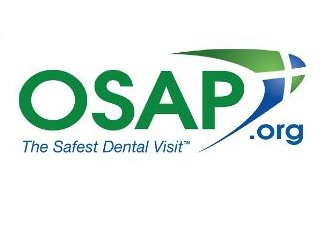Safety must be at the forefront of each process in the delivery of oral health care. In order to ensure the safest dental visit for both workers and patients proper cleaning and disinfection of clinical surfaces must be understood and implemented appropriately.
We are reminded of the value of environmental infection control when reviewing the case of hepatitis B transfer from one patient to another in an oral surgery practice in 2001. As noted by the Centers for Disease Control and Prevention (CDC), the practice followed standard infection control practices and “investigators could only speculate that a lapse in cleanup procedures had occurred after the source patient, leaving an area contaminated with blood.”
Creating a list to identify areas that will need attention is a great exercise to ensure all potentially contaminated surfaces are included in the cleaning schedule. Contaminated surfaces include those that may be touched by health care providers’ contaminated gloves or contacted with spray and spatter containing the oral fluids of the patient. This may include, but is not limited to: dental unit attachments, light handles, radiograph equipment, drawer handles, reusable containers of dental products, computers and bracket table. Surfaces must be appropriately cleaned and disinfected after each patient visit.
There are many different types of products that may be utilized in the cleaning/disinfection process. The product selected must be an Environmental Protection Agency (EPA) registered hospital level disinfectant that eliminates hepatitis B and HIV, and with a tuberculocial kill claim if there is the possibility that blood is present on the surfaces. Many products can act as both cleaner and disinfectant, eliminating the need to have two products. This ability to both clean and disinfect should be indicated on the label.
Once the surfaces have been identified and the product has been selected, workers must understand the correct way to address surface contamination. Wearing appropriate personal protective equipment (PPE), the surfaces must first be cleaned to remove any soil, such as blood, saliva and dental materials. If using a spray disinfectant, first spray the surfaces and wipe with a paper towel to remove debris. Follow this cleaning step with an additional spray to ensure the disinfectant remains in contact with the contaminated surface for the time indicated on the label. If your practice has selected commercial wipes, use one set of wipes to clean all contaminated surfaces, followed by a new set of wipes to apply the disinfectant. The surfaces must remain wet with disinfectant for the time indicated on the label. The manufacturer will provide specific direction on both the application process and employee protection: following the manufacturer’s directions is critical in the overall success of this process.
A key element in the overall safety program for any practice is proper cleaning and disinfection of contaminated surfaces. With a thorough written process, employee training and the appropriate products your practice can ensure that both patients and workers experience the safest dental visit.
For practice resources to support the safest dental visit, visit www.thesafestdentalvisit.org.





Excellent article and a necessary reminder of proper technique. Thanks!